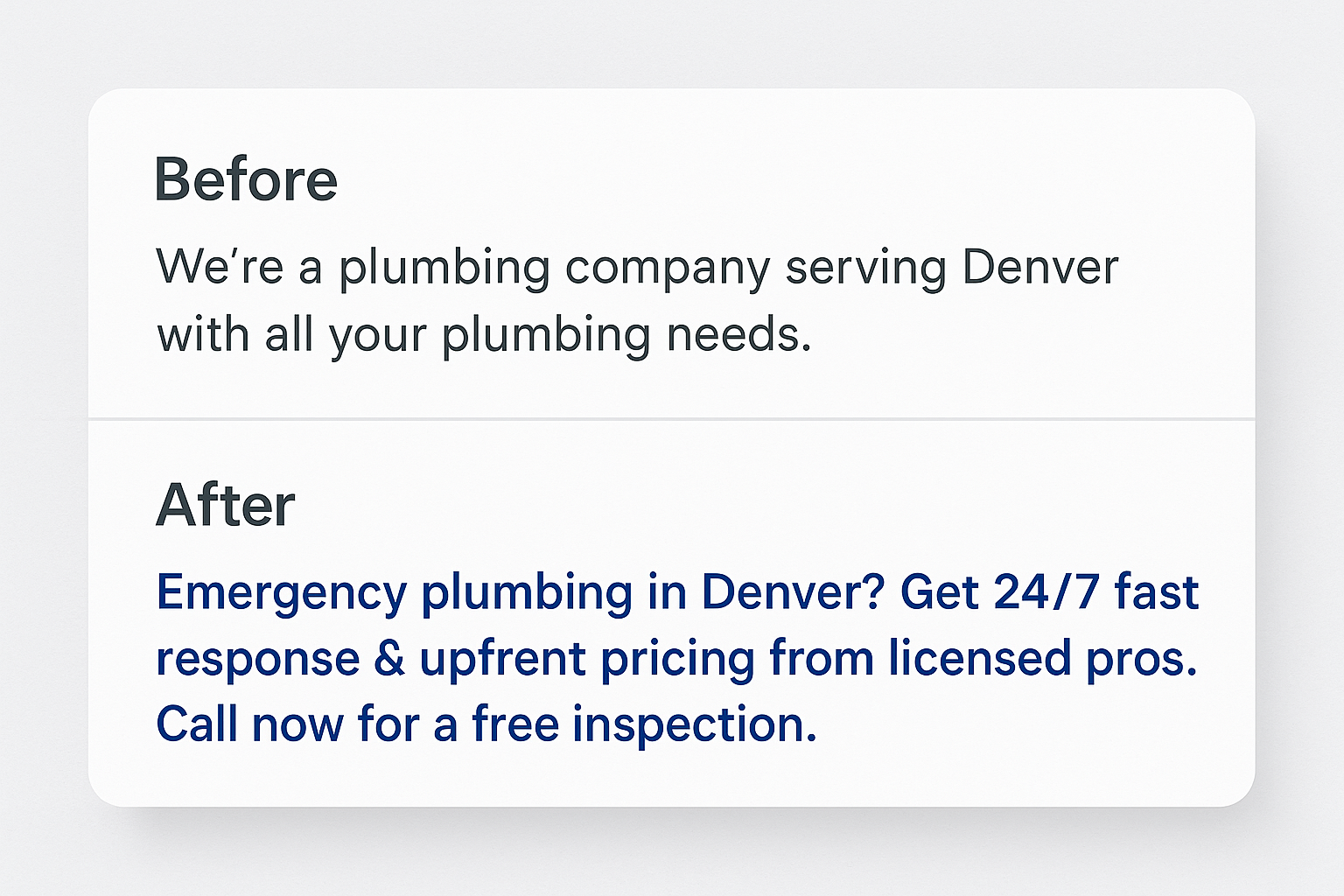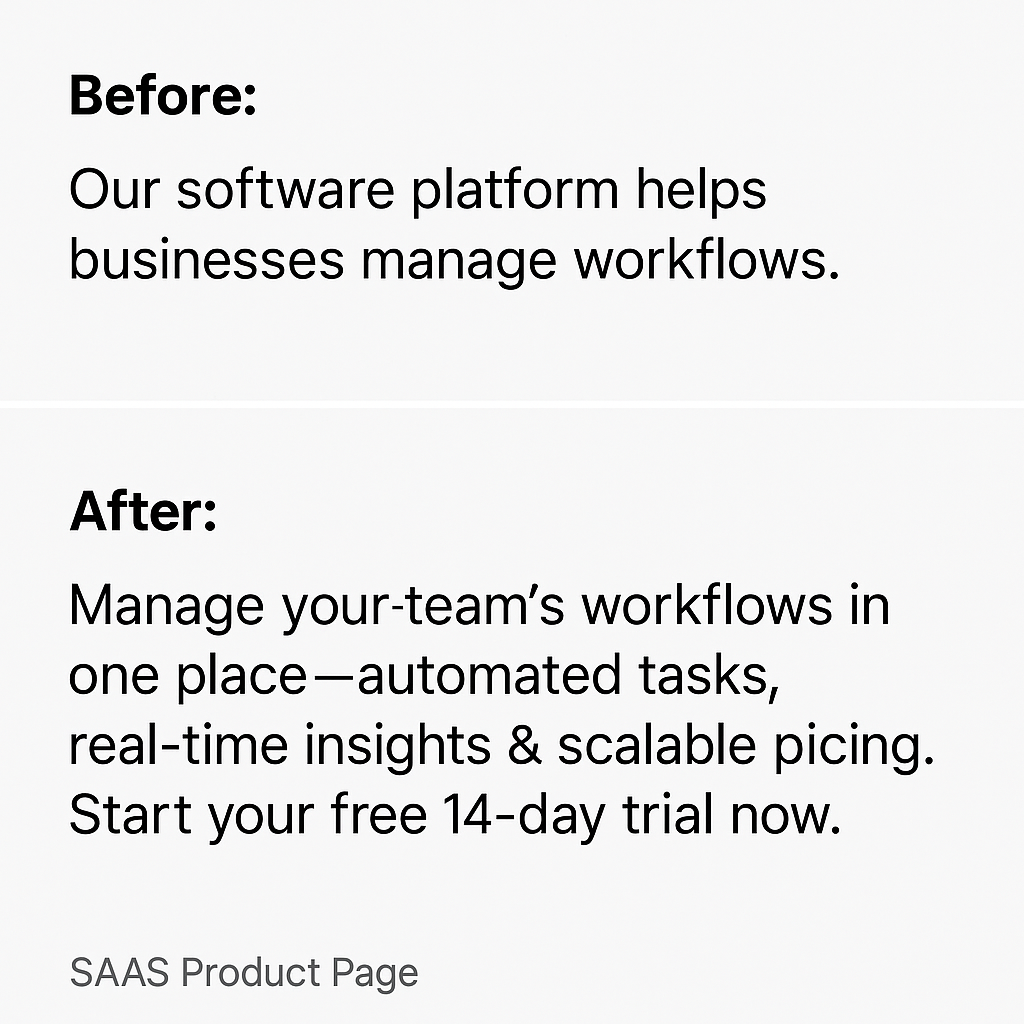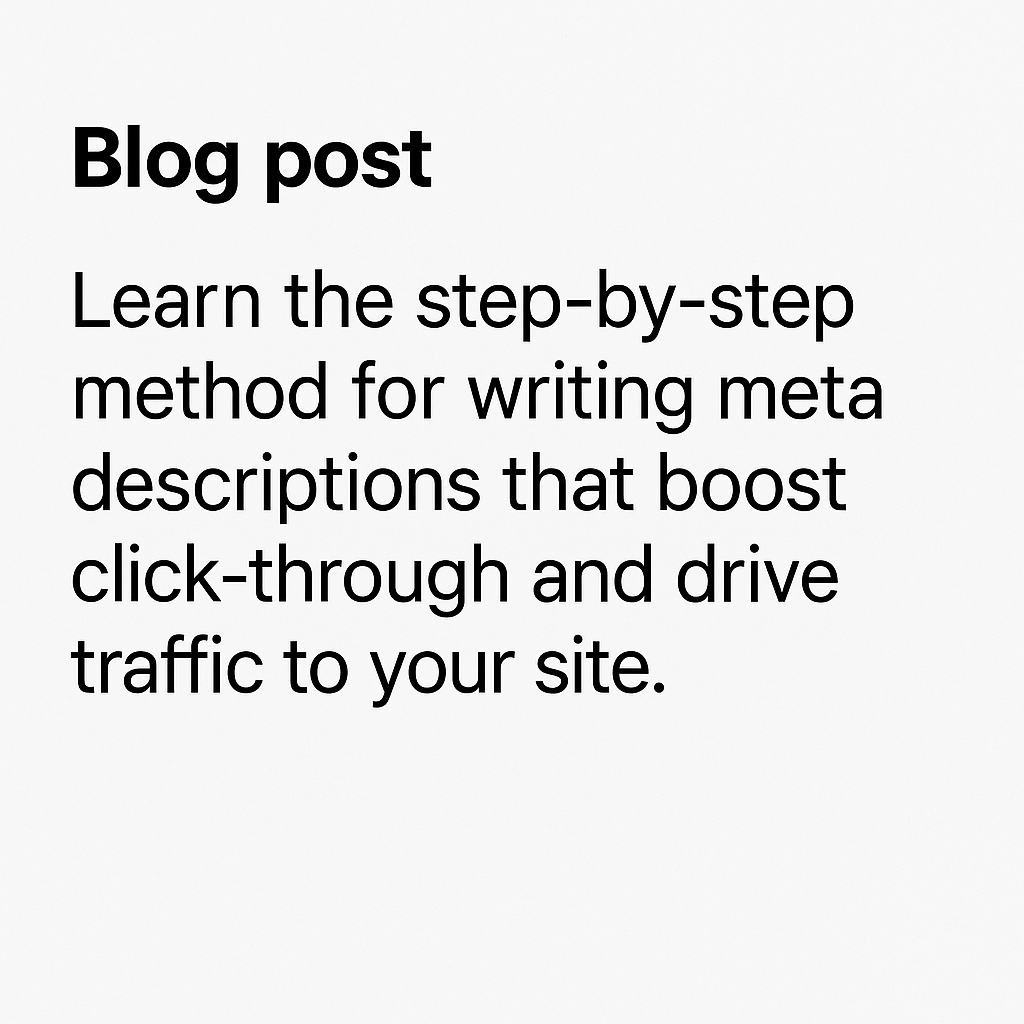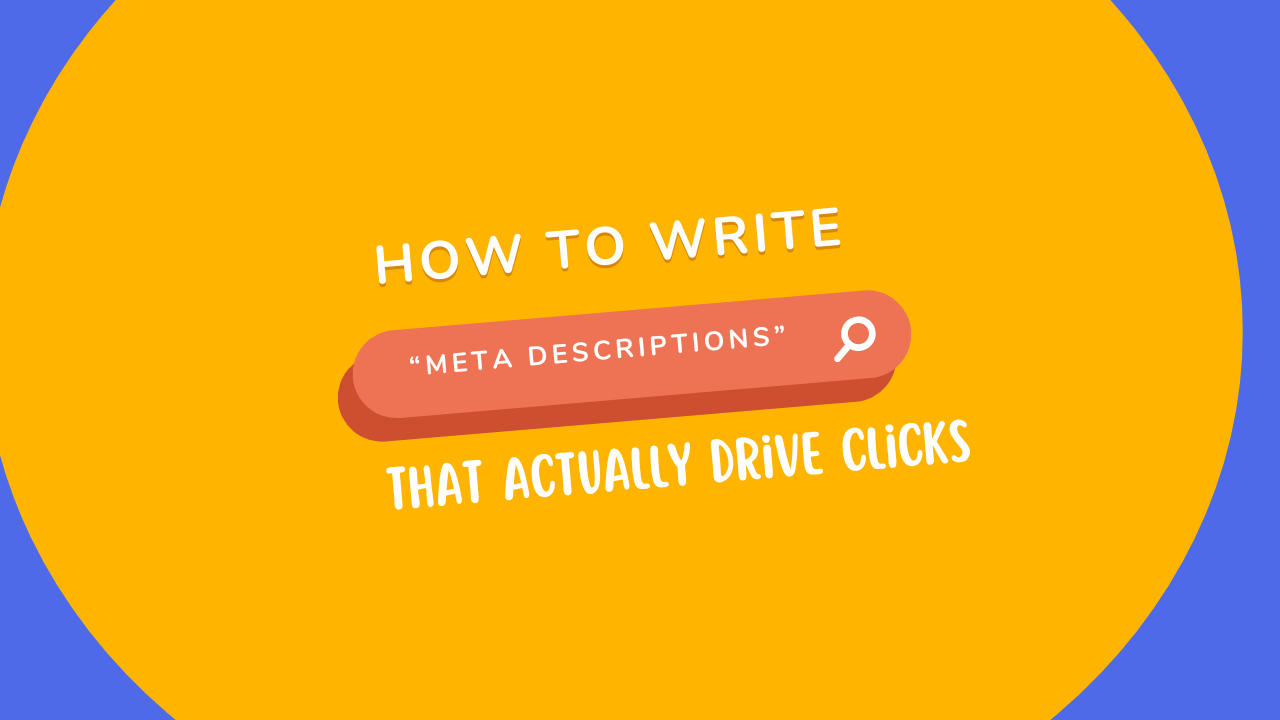You’ve put time and effort into creating quality content. You’ve likely taken care of on‑page SEO factors like headings, keywords, image alt text, and internal links. But still, the traffic isn’t coming in the way you’d expect. What’s missing? Very often, the culprit is the meta description.
The meta description doesn’t directly affect your page’s ranking in search results. However, it plays a key role in whether people choose to click your link once it appears. Writing an effective meta description involves addressing what the searcher wants, giving them a reason to click, and setting correct expectations.
In this post, we’ll explain how to craft meta descriptions that attract attention, match the searcher’s intent, and increase traffic. We’ll discuss what a meta description actually is, why it’s important for click‑through rate (CTR), the structure of high‑performing descriptions, a step‑by‑step process you can follow, helpful tools, common mistakes to avoid, real examples, and how to use data to improve over time.
If you have pages that rank but don’t receive the clicks you want, you’re in the right place. Let’s explore what a meta description is, what it does (and doesn’t do), and how you can create ones that truly work for your users and your business.
What Is a Meta Description, Really?
A meta description is essentially a brief piece of text that appears below your page’s title in search engine results. In simple terms, it’s your opportunity to pitch your page’s content to someone browsing the results and deciding whether to click. It’s not the full story. It doesn’t directly affect ranking. But it influences whether someone clicks on your page.
Here’s where it typically appears: when someone searches on Google Search (or another search engine), your listing will display a title, the URL, and often — beneath it — the meta description (or a snippet from your page if Google finds it more relevant). That snippet is your chance to influence the user’s decision. If you write something compelling and relevant to what the user is seeking, you’re more likely to get the click.
One thing to remember: Google doesn’t always display the meta description you provide. If it finds a different snippet that better matches the searcher’s query, it might replace yours. That doesn’t mean you shouldn’t write a strong one. If you create something clear and relevant, you increase your chances of being shown exactly what you want.
Also, while meta descriptions don’t directly affect rankings (meaning having specific keywords in the meta description doesn’t boost your position in search results), they definitely impact click‑through rate. A higher CTR can indirectly improve performance through engagement metrics, which can then influence visibility. For length, aim for about 150‑160 characters: this provides enough space to convey value, include a keyword, and add a call to action — while avoiding being cut off or truncated in search results.
Why Meta Descriptions Matter for Click‑Through Rate (CTR)
When someone arrives at the search results page, what do they do? Eye-tracking studies reveal that users scan through the list: they look at the title, briefly glance at the URL, and then read or skim the description beneath each result. The meta description functions like the “ad copy” for your page. It’s the message you send to the user, saying, “Here’s why this result matters for you — click me.” Because of that, even pages that rank lower can outperform others if their meta description resonates more effectively.
Imagine two pages on the same topic, one ranking higher but with a generic description like “We provide solutions for your needs.” The other ranking is just below, but with a description like “Learn the step‑by‑step method to write meta descriptions that drive actual clicks.” The latter probably attracts more interest because it directly addresses what the searcher wants: practical help.
When you get more clicks from the same number of impressions, your CTR increases. Search engines see that as higher relevance, which can improve your ranking indirectly. This means a strong meta description isn’t just a bonus — it’s a vital part of the process from rankings to impressions, clicks, and engagements.
In real-world cases, site owners have seen meaningful traffic increases after rewriting meta descriptions. It only takes a careful rewrite, aligned with searcher intent, for your “click-through opportunity” to improve. Moreover, since this is relatively low effort compared to full content rewrites, it’s one of the more effective quick wins in the SEO toolkit. When you review your analytics and find pages with good impression counts but low CTRs, those could be meta description opportunities waiting to be found.
The Anatomy of a High‑Performing Meta Description
What makes a meta description truly effective? Here’s a breakdown of the essential components you should include and how they work together.
Clear value proposition. Immediately address the “What’s in it for me?” question. Why should someone click your link? What benefit will they receive? If you don’t answer that, you miss the opportunity.
Include the main keyword — but write for humans. A keyword signals relevance, but you shouldn’t force it awkwardly into the sentence. Aim for a sentence that sounds natural, so searchers trust your page is what they need.
Reflect searcher intent. If someone is searching for how‑to information, your description should address that. If someone is comparing options before making a purchase, you may frame it differently (“Find the best plan for your needs”). Matching intent helps you connect with the person behind the query.
Add urgency or emotional pull (without sounding spammy). Words like “now,” “easy,” “step‑by‑step,” “proven,” etc., can help spark interest. But avoid exaggerated claims or clickbait-style language. You want trust as much as you want clicks.
Include a call to action (CTA). Encourage action: “See how,” “Get the guide,” “Start today,” “Learn more,” etc. This encourages readers to move from casual scanning to clicking.
Avoid duplicating meta descriptions across pages. When many pages have identical descriptions, you lose differentiation. That can hurt your CTR because the description isn’t customized for each unique page.
Here’s an example of weak vs strong:
- Weak: “We offer website design services and help you grow your business online.”
- Strong: “Read our practical checklist for writing compelling meta descriptions that increase click‑throughs and get more traffic.”
The strong version clearly states a benefit, addresses the reader’s needs, offers added value, and encourages action. The weak version is vague, generic, and does not connect with the user’s intent.
How to Write Meta Descriptions That Actually Get Clicks (Step‑by‑Step)
Here’s a gut‑friendly process you can follow each time you write or rewrite a meta description. Use this checklist:
Step 1: Identify the page’s purpose and audience.
What is the purpose of this page? Who is it for? What problem or question are they trying to solve? Without clarity here, you’ll end up with a generic description that doesn’t connect.
Step 2: Choose one focused keyword.
Choose the main term that matches the content and your target query. Avoid including 10 keywords in one description — one focus keyword is sufficient. It keeps the description clear and focused.
Step 3: Address the searcher’s problem or need.
What’s the pain point or question? Use language that reflects the searcher’s mindset. If they want “meta description tips for SEO,” discuss “writing descriptions that increase your click‑through rate.”
Step 4: Make the benefit of clicking obvious.
What will they get if they click? A guide, checklist, examples, shortcuts? Clearly specify: “Learn how to…,” “Get the proven method…,” “See examples of….” This will encourage more clicks.
Step 5: Keep it under the character limit.
Aim for about 150-160 characters, including spaces. Going over that length might cause search engines to truncate your description, cutting off the message.
Step 6: Test and refine — especially for top pages.
Your most important pages (those that rank well but have low CTR) deserve experimentation. Create two or three variations over time, monitor performance, and choose the best performer.
Bonus: How to write metas for blog posts vs. product pages.
For blog posts: focus on the value and what the reader will learn. For product pages: emphasize what makes the product unique, mention the benefits, include an offer if applicable, and add a clear CTA. Adjust the tone accordingly.
If you follow these steps, you’ll create descriptions that are concise, focused, user‑centered, and more likely to attract clicks.
Tools That Help You Write Better Meta Descriptions
Manual writing of meta descriptions is essential, but you can also rely on useful tools to make the process easier. Here are some top options:
- SERP simulator tools. These tools allow you to preview how your title, URL, and meta description will appear in search results. That helps you determine if your description might be cut off or doesn’t stand out visually.
- SEO plugins like Yoast SEO, Rank Math, and SEOPress. These integrate with your content management system (CMS) and allow you to enter and preview meta descriptions, check their length, and manage duplicates.
- Chrome extensions to preview SERPs in real time. These plug into your browser so you can see how your page looks in search results for various queries or devices.
- AI writing tools for drafts (and how not to overuse them). If you want a head start, you can ask a tool to suggest a meta description and then refine it so it sounds human, specific, and unique. Moreover, don’t rely on these tools to do everything — make sure you edit with purpose and context.
- Tracking CTR in Google Search Console to know what’s working. Search Console displays impressions and clicks for your pages, along with the average CTR. Pages with high impressions but low CTR are prime candidates for updating your meta descriptions.
These tools won’t replace good writing, but they’ll help you work smarter and make sure you’re checking the right boxes when you create meta descriptions.
Common Meta Description Mistakes to Avoid
Even when we know the right approach, it’s easy to fall into meta description traps that do more harm than good. Here are the common mistakes I observe:
- Keyword stuffing or overloading with buzzwords. “Best meta description tips SEO click‑through rate free guide NOW” — it reads awkwardly, doesn’t assist the user, and might seem spammy.
- Being too vague or generic. Example: “We offer solutions for all your needs…” reveals very little. If you don’t promise something specific, it won’t attract a click.
- Forgetting to update meta descriptions during content refreshes. If you rewrite a post or product page and leave the old meta description unchanged, it may no longer match the content — that mismatch can reduce CTR.
- Duplicating the first sentence of your blog post. While convenience might tempt you to reuse your opening line, it often lacks the punch or specificity needed for a meta description. Additionally, duplicate descriptions across pages decrease differentiation.
- Writing a headline instead of a description. Headlines and descriptions serve different purposes. If you only write something like “How to Write Meta Descriptions That Actually Drive Clicks” without including the benefit or what’s in it for the reader, you miss a chance.
- Letting Google auto‑generate everything and hoping for the best. While Google can select a snippet for you, that choice might not match what you want or what your user should see. Providing your own clear description gives you greater control.
Avoid these mistakes, and your meta descriptions will be much more likely to succeed.
Examples of Great Meta Descriptions in the Wild
Let’s explore both real-world and fictional examples of meta descriptions from various industries, with comments on what works. These are meant to inspire — don’t copy them exactly.
Local service business (fictional).
Before: “We’re a plumbing company serving Denver with all your plumbing needs.”
After: “Emergency plumbing in Denver? Get 24/7 fast response & upfront pricing from licensed pros. Call now for a free inspection.”
What works: It addresses a clear problem (emergency plumbing), gives a benefit (fast response, licensed pros, free inspection), includes urgency, and a call to action.

SaaS product page (fictional).
Before: “Our software platform helps businesses manage workflows.”
After: “Manage your team’s workflows in one place—automated tasks, real‑time insights & scalable pricing. Start your free 14‑day trial now.”
What works: Benefit (manage workflows in one place), features (automated tasks, real‑time insights), call to action (free trial), urgency implied (now).

Blog post (real).
Suppose a blog on “how to write better meta descriptions.” A strong meta might be: “Learn the step‑by‑step method for writing meta descriptions that boost click‑through and drive traffic to your site.” That gives benefits (boost click‑through), direction (step‑by‑step method), target (your site).

Ecommerce product page (fictional).
Before: “Men’s leather jacket – high quality.”
After: “Premium men’s leather jacket with full‑grain cowhide, custom lining & lifetime warranty. Order today—free shipping and easy returns.”
What works: Specific benefit (full‑grain cowhide, custom lining, lifetime warranty), incentive (free shipping, easy returns), call to action (order today).

What you’ll notice across all the good examples is that the language is user‑centered, not self‑centered. It addresses the reader’s needs, provides benefits, and gives a reason to act. Try to adopt the structure (not the exact words) and modify it to fit your content.
How to Improve CTR Over Time Using Data
You’ve written a strong meta description… great. Now what? The next step is to track performance and make adjustments based on real data. Here’s how to do that.
Use Google Search Console’s Performance report. Filter for pages with a high number of impressions (meaning they’re getting seen) but a low click-through rate. These are your biggest opportunities. Select a few of those pages and rewrite their meta descriptions using your improved template.
After making changes, wait 30 to 60 days (depending on traffic) to collect data. Then compare the CTR before and after to see if there’s an improvement. Record what you changed (e.g., added benefit, adjusted tone, included CTA) so you can identify patterns over time.
You don’t always need dramatic changes to achieve small, steady improvements. Sometimes, simply changing the first phrase or adding a verb to encourage action can significantly impact traffic. Over time, these small gains add up. Keep track of your successes and develop a collection of meta description strategies that regularly perform well. Then, gradually apply these best practices to less-visible pages.
Small Line, Big Impact
Meta descriptions are one of those SEO details that are easy to overlook — but they are among the most important for encouraging action. A well‑written meta description doesn’t directly affect your rank, but it increases the chances that someone will click once they see you.
The best meta descriptions are short, clear, targeted at people (not bots), and provide a reason to click. Think of each one as a small ad for your content: you’ve secured the spot (your ranking), and now your description needs to sell it. Take the time to create them, test, and refine them. Your site’s pages will thank you.
Ready to Elevate Your Brand?
It’s time to stop guessing and start growing. At Content-Author.com, we help brands like yours reach new heights with strategy-driven SEO, PR, and content marketing that actually converts. Whether you need authoritative backlinks, powerful editorial placements, or optimized web content that drives traffic and sales — our team delivers results that speak for themselves.
Let’s turn your goals into measurable growth.
👉 Book Your Free Strategy Call and see how fast we can move the needle together.
